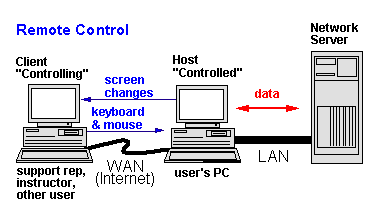Modulation
Modulation is the addition of information (or the signal) to an electronic or optical signal carrier. Modulation can be applied to direct current (mainly by turning it on and off), to alternating current, and to optical signals. One can think of blanket waving as a form of modulation used in smoke signal transmission (the carrier being a steady stream of smoke). Morse code, invented for telegraphy and still used in amateur radio, uses a binary (two-state) digital code similar to the code used by modern computers. For most of radio and telecommunication today, the carrier is alternating current (AC) in a given range of frequencies.
Demodulation
Demodulation is the act of extracting the original information-bearing signal from a modulated carrier wave. A demodulator is an electronic circuit (or computer program in a software defined radio) that is used to recover the information content from the modulated carrier wave.
Bandwidth
The amount of data that can be transmitted in a fixed amount of time. For digital devices, the bandwidth is usually expressed in bits per second(bps) or bytes per second. For analog devices, the bandwidth is expressed in cycles per second, or Hertz (Hz).
TCP/IP
Transmission Control Protocol/Internet Protocol, the suite of communications protocols used to connect hosts on the Internet. TCP/IP uses several protocols, the two main ones being TCP and IP. TCP/IP is built into the UNIX operating system and is used by the Internet, making it the de facto standard for transmitting data over networks. Even network operating systems that have their own protocols, such as Netware, also support TCP/IP.
Node
In networks, a processing location. A node can be a computer or some other device, such as a printer. Every node has a unique network address, sometimes called a Data Link Control (DLC) address or Media Access Control (MAC) address.
Client
A client is an application or system that accesses a remote service on another computer system, known as a server, by way of a network. The term was first applied to devices that were not capable of running their own stand-alone programs, but could interact with remote computers via a network. These dumb terminals were clients of the time-sharing mainframe computer.
Server
In computer networking, a server is a program that operates as a socket listener.[1] The term server is also often generalized to describe a host that is deployed to execute one or more such programs.
Network Operating Systems
Abbreviated as NOS, an operating system that includes special functions for connecting computers and devices into a local-area network (LAN). Some operating systems, such as UNIX and the Mac OS, have networking functions built in. The term network operating system, however, is generally reserved for software that enhances a basic operating system by adding networking features.
Network Administrator
A network administrator is a person responsible for the maintenance of computer hardware and software that comprises a computer network. This normally includes deploying, configuring, maintaining and monitoring active network equipment. A related role is that of the network specialist, or network analyst, who concentrates on network design and security.









No comments:
Post a Comment